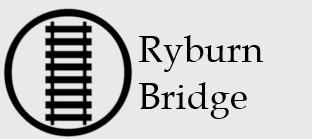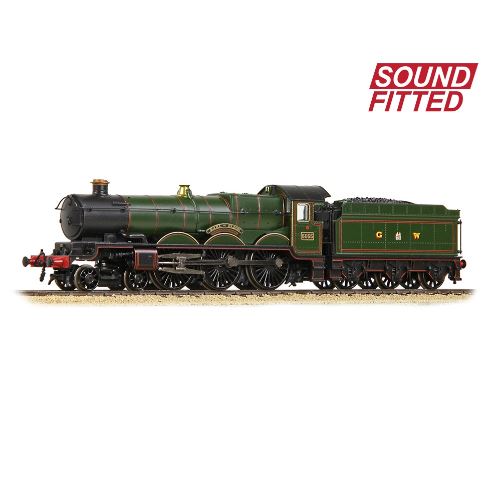0 x item(s)
372-034SF GWR 4073 Castle Earl of Eldon GWR Lined Green (GW) SF
The Graham Farish Castle Class locomotive is a worthy replica of one of the Great Western Railway’s (GWR) finest steam locomotive designs, with its elegant appearance only amplified by the beautiful lined green livery that was synonymous with the GWR, and later British Railway’s Western Region. This N scale model combines the Castle’s good looks with an exquisite paint finish to produce a masterpiece in miniature fit for any Western-inspired collection.
The model that started a revolution as the first British N Scale steam locomotive to be made with SOUND FITTED, the Graham Farish ‘Castle’ has a technical specification as impressive as its good looks, with a powerful coreless motor driving the wheels through a diecast metal gearbox, all wheel pickup from the driving and tender wheels and separate metal bearings fitted to the driving wheel axles, smooth and reliable running is guaranteed. The tender houses a speaker and Next18 DCC decoder socket, making it easy to add sound, or opt for this SOUND FITTED version and the work is done for you, so you can enjoy realistic sound effects straight from the box on both Analogue and DCC.
- Graham Farish N Scale
- Era 3
- Pristine GWR Lined Green (GW Crest) Livery
- Running No. 5055
- Named ‘Earl of Eldon’
- SOUND FITTED – Fitted with a Zimo MS590N18 DCC Sound Decoder – See below the for the function list
- Length 145mm (over couplings)
DETAIL VARIATIONS SPECIFIC TO THIS MODEL
- Collett 4,000-gallon Tender
- Single Chimney
- Inside Cylinder Chest: Box Pattern with Curved Front
- Straight Cylinder Steam Pipes
- Tapered Buffers
- Horizontal Cab Side Handrail
- Rear Sandboxes Behind Cab Steps
- Short Nameplates
GRAHAM FARISH GWR CASTLE CLASS SPECIFICATION
MECHANISM:
- Coreless motor
- Electrical pickup from all driving and tender wheels
- Separate metal bearings fitted to each driving wheel axle
- Metal bearings fitted to each tender wheel axle
- Diecast metal chassis block
- Diecast metal gearbox, with gearing arranged for prototypical running speeds and haulage capabilities
- 9mm (N gauge) wheels to NEM310 standards with authentic profile and detailing
- Optional traction tyres fitted to the rear driving wheels (replacement wheelset without traction tyres supplied in the accessory pack)
- Valve gear of metal construction
- Discreet fixed locomotive to tender drawbar with integral electrical connections
- Coupling pocket to NEM355 standards fitted to the front bogie
- Removable coupling pocket to NEM355 standards fitted to the tender chassis
- Designed to operate on curves of second radius (263.5mm) or greater
DETAILING:
- High-precision, injection-moulded bodyshell, running plate and tender with separately fitted details parts including smokebox door, lower front lamp irons, steam pipes, whistle and reverser
- Separately applied metal components including handrails, buffers and sand pipes
- Dome, filler cap, water scoop and vacuum pipe added to the tender as separate parts
- Tender fitted with metal coal-effect load
- Detailed cab interior including boiler backhead controls and gauges, brake standard and water scoop standard
- Hinged and posable metal fall plate between the locomotive and tender
- Each model supplied with a full set of accessory parts including dummy screwlink couplings and front vacuum pipe
DCC:
- Next18 DCC decoder interface located in the tender
SOUND:
- Speaker installed in the tender of all models for optimum sound reproduction
- Zimo MS590N18 DCC Sound Decoder fitted to SOUND FITTED versions
- Sound files produced specifically for the Graham Farish GWR Castle Class using recordings from real locomotives
- SOUND FITTED models operate on DCC and Analogue control as supplied
LIVERY APPLICATION:
- Authentic liveries applied to all models
- Multiple paint applications employed on each model using GWR and BR specification colours
- Logos, numerals and text added as appropriate using multi-stage tampo printing using authentic typefaces, logos and colours
- Named locomotives are supplied with pre-fitted, fully decorated nameplates
SOUNDS
F1 - Sound - On/Off
F2 - Brake
F3 - Cylinder Drain Cocks
F4 - Rising Toot Whistle
F5 - Reverser
F6 - Coal Shovelling
F7 - Injector
F8 - Blower
F9 - Flange Squeal (Speed Related)
F10 - Safety Valves Lifted
F11 - Handbrake
F12 - Water Tank Filling
F13 - Coupling Clatter
F14 - Light Engine Mode
F15 - Fade All Sounds
F16 - Guard's Whistle & Response (Toot & Vocals)
F17 - High Tone Whistle
F18 - High & Low Whistles
F19 - High Tone Rising Whistle
F20 - Short High Tone Whistle
F21 - Long High Tone Whistle
F22 - Long High & Low Tone Whistles
F23 - Vocals (On - ‘Going under, Bill’ / Off - ‘Righto Norm’)
F24 - Vocals (‘Right o’ way from the Guard’
F25 - Vocals (‘Clear my side’)
F26 - Vocals (On - ‘Green flag’ / Off - ‘Righty-ho’)
F27 - Volume Down
F28 - Volume Up
Analogue Users: Please note that normal load running sounds and any other automatic or randomised sounds will also operate when this model is used on analogue control (DC) straight from the box!
GWR CASTLE CLASS HISTORY
The first of the GWR 4073 ‘Castle’ Class locomotives was built in 1923 to the design of then- Chief Mechanical Engineer Charles Collett. The type was intended for express passenger trains and used the 4-6-0 wheel arrangement so favoured by the GWR and built on the success of the earlier Star Class which first entered traffic in 1907 albeit with a new, larger boiler making it more powerful and capable of handling the longest expresses.
Over a period of 27 years a total of 155 Castles were built by the GWR’s Swindon Works, joined between 1925 and 1940 by 16 more that were converted from older locomotives, mostly Stars. All 171 locomotives were named, usually after Castles in the west, but those rebuilt from Stars generally retained their original names although during their careers some Castles carried other names, including those of noble Earls and some named after RAF aircraft used during World War Two.
The Castle Class turned out to be one of the GWR’s most successful designs, they were not as powerful as the later King Class locomotives, however these were restricted to a small number of routes due to their greater weight, a problem not faced by the Castles which could be found hauling many of the fastest and heaviest express workings across a large part of the GWR network.
So impressive was the original design that very few developments were made during their service lives. Streamlining was trialled on one example, but the GWR did not pursue this idea, and several were converted to oil firing for a short period but again this came to nothing. The fitting of a double chimney to 65 members of the class from 1956 was the most significant change as BR bid to improve high speed performance.
The first withdrawal came in 1950 when ‘Star’ conversion No. 4009 bowed out of service, but the type remained strong until 1965 when No. 7029 ‘Clun Castle’ was the last to be withdrawn after it had worked the final steam out of Paddington on 27th November 1965. ‘Clun Castle’ is among eight Castles that survive in preservation today, although the future of one, No. 7027 ‘Thornbury Castle’ which has never been restored from scrapyard condition, remains uncertain.











